
Road trips are part of the American story. The open highways, the freedom to explore, and the idea of self-reliance have always defined them. But electric vehicles add a new challenge. How do you keep your car charged when the nearest station is miles away, or worse, when the one you counted on is out of order?
That’s where carrying a portable EV charger for road trips changes everything. It gives you the ability to plug in wherever an outlet exists, be it at an RV park, a cabin rental, or a friend’s driveway.
In this article, we’ll explain why every EV driver should keep one in the trunk, and how it turns range anxiety into road trip confidence.
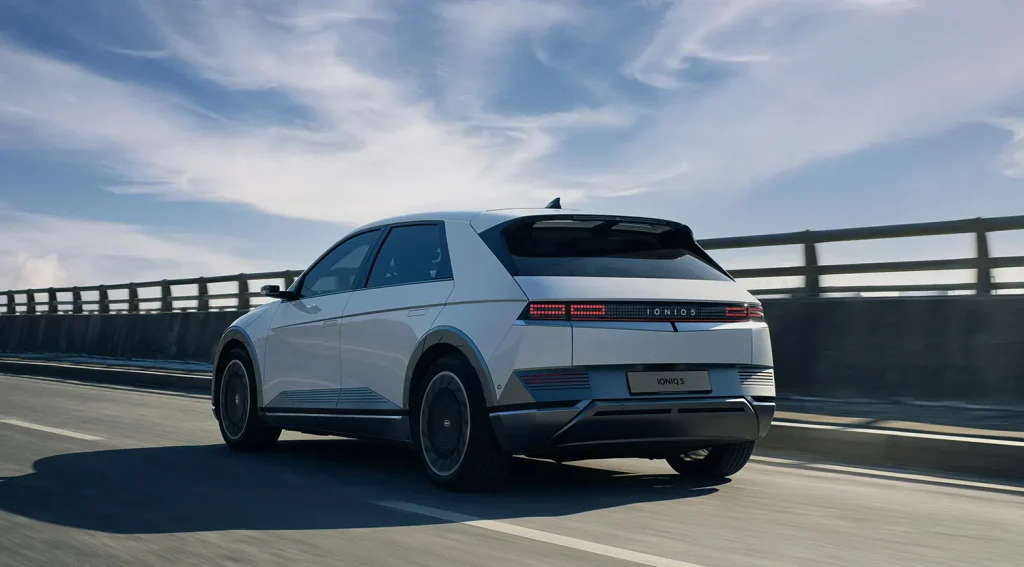
The Reality of EV Road Trips
EV charging networks are fast-expanding, but they’re not yet close to flawless. According to Drive Electric GOV, as of writing, there are now over 77,000 public charging stations and 229,000 charging ports across the United States. That’s quite impressive, compared to just a few years ago. However, gaps in coverage remain obvious once you leave metro areas.
The challenge is particularly clear in rural regions, national parks, and smaller towns. A J.D. Power study in 2023 found that about one in five charging attempts fails, often due to broken equipment or software glitches. Given that, For families planning long-distance drives, that kind of unpredictability creates a lot of stress.
And this is what people call “range anxiety.” It’s not just about whether your car has enough miles left; it’s about whether the next charger is available and functional.
On road trips, that worry can take the joy out of traveling. Instead of focusing on the journey, you’re calculating distances to chargers and wondering if your backup plan is good enough. A portable EV charger for road trips solves that by giving you a reliable fallback no matter where you stop.
What is a Portable EV Charger?
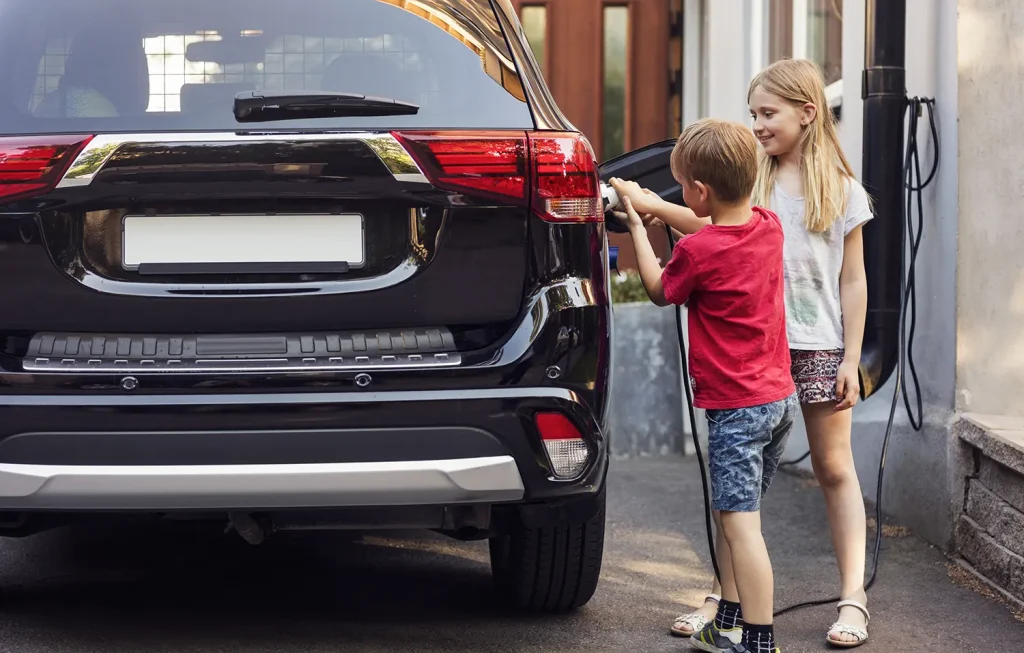
A portable EV charger is a compact device that lets you power your electric vehicle from standard outlets instead of relying only on home wall units or public stations.
Contrary to a fixed home charger, it is not mounted to the wall, rather it plugs directly into an outlet. Hence, you can carry it along with you. And unlike public fast chargers, which are expensive and sometimes unreliable, a portable charger gives you independence wherever you travel.
There are two main types. Level 1 portable ev chargers use a 120V household outlet, adding about roughly 3–5 miles of range per hour. They’re slower but useful when nothing else is available.
Level 2 portable chargers plug into 240V outlets, such as NEMA 14-50 sockets at RV parks, adding between 20–35 miles of range per hour. Many come with adapters so you can switch between plug types.
Our (Duevolt’s) chargers support dual-voltage, which means you don’t need to select between Level 1 or Level 2. The same unit can plug into a 120V outlet or a 240V outlet. That flexibility matters on long trips where you may not know what kind of connection you’ll find.
Key Benefits of Carrying a Portable EV Charger
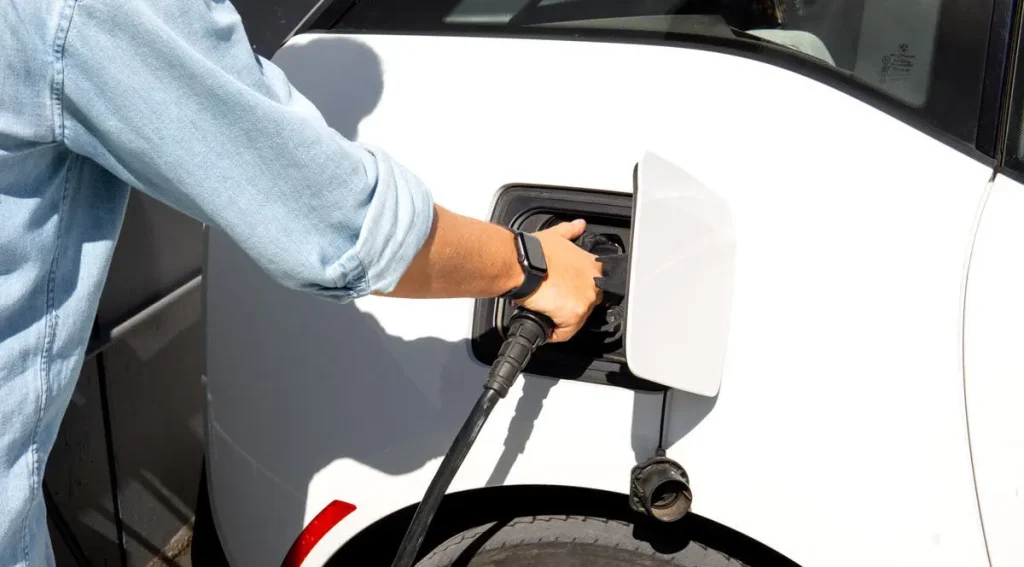
Carrying a portable EV charger for road trips is less about convenience and more about being prepared. Here’s why it makes a real difference:
Freedom to Charge Anywhere
You’re no longer tied to public stations. With a portable charger, you can top up at RV parks, rental cabins, or even a friend’s garage. Anywhere there’s an outlet, you have a way to keep moving.
Emergency Backup
Public networks are far from being perfect. As mentioned above, a J.D. Power study found nearly 1 in 5 charging attempts fails. In those moments, having an emergency EV charger in the trunk means you can still plug into a standard outlet and regain enough range to reach the next station.
Peace of Mind on Long Drives
Range anxiety is real, in particular on routes that pass through rural towns or national parks. A portable charger acts as insurance, hence you can plan trips around destinations, not charging maps.
Dual-Voltage Flexibility
The best portable EV charger can handle both Level 1 (120V) and Level 2 (240V). That means slow but steady charging from any wall outlet, or faster to 20–35 miles per hour when you find a NEMA 14-50 connection.
Time Savings Overnight
At Level 2, a 40-amp portable charger can fully replenish most daily driving needs in a single night. You wake up ready to go without detours.
Universal Compatibility
Whichever your EV uses J1772 or Tesla’s NACS plug, portable chargers now come in both versions. You pick the model that matches your car, and you’re covered.
Compact and Practical
Modern chargers are light, compact, and easy to store in your trunk, so they don’t eat into cargo space.
Put simply, carrying one transforms road trips. You’re free to drive with fewer worries, because regardless where you stop, charging is always possible.
Road Trip Scenarios Where a Portable Charger Makes a Difference
A portable EV charger for road trips is most valuable when plans don’t go as expected. Consider these situations that real drivers have faced:
Rural detours
You’re traveling through a small town, only to find the single charging station out of service. A Reddit user described driving across the Midwest and discovering multiple chargers offline, forcing them to “limp along on Level 1 charging at a friend’s barn outlet” just to reach the next town. With a portable charger, that situation becomes manageable instead of stressful.
National parks and outdoor trips
Public stations are sparse in remote destinations like Yellowstone or the Grand Canyon. In fact, EV owners frequently share stories of waiting in long queues at the only working charger near a park entrance. Plugging into a 240V outlet at a campsite or RV park with your own charger can save hours.
Broken chargers on highways
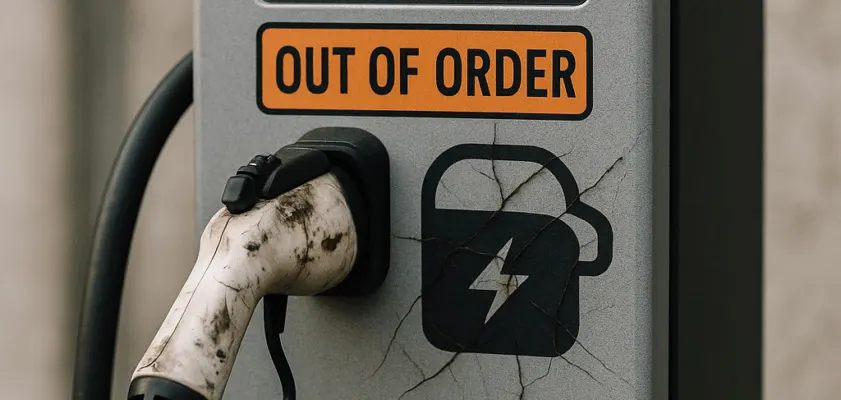
According to J.D. Power, about 14% of public charging attempts fail. Imagine arriving low on range and finding every stall marked “out of order.”
One Tesla owner reported how their road trip stalled for hours until they located a backup plug. Carrying an emergency EV charger would have meant charging immediately from any nearby outlet.
These stories highlight why EV owners should prepare for the worst. Road trips are meant for exploration, not worrying about whether a charger will work or not. Having a portable unit in the trunk safeguards that even when plans fall apart, your trip does not.
Selecting the Right Portable EV Charger
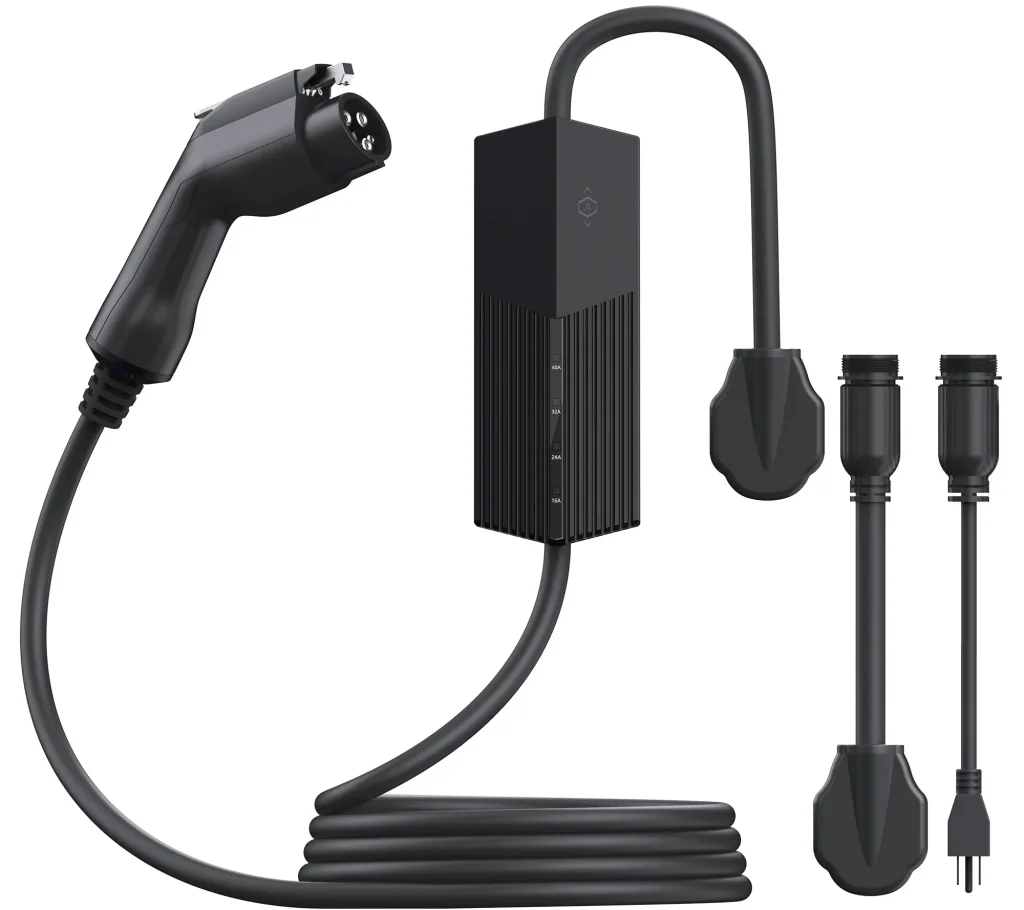
Not every charger is built equal, therefore selecting the right one matters. The key factors to weigh are amperage, voltage flexibility, compatibility, and build quality. A strong option is a 40-amp portable EV charger, since it covers both Level 1 and Level 2 charging. That means you can plug into a household 120V outlet when nothing else is available, yet still get fast charging speeds from a 240V NEMA 14-50 outlet when you find one.
Compatibility is the next piece. Non-Tesla EVs in the U.S. use the J1772 connector, whilst Tesla drivers rely on NACS. Duevolt offers both:
● Level 1 & Level 2 portable EV charger for J1772-equipped vehicles.
● Portable EV Charger built for Tesla drivers with a native NACS plug.
All models include adjustable current (16A–40A), dual-voltage capability, delay charging and more. Built-in protections like overcurrent, overheating, and ground fault detection mean you’re covered on the safety side too.
We hope this guide has given you clarity on what to look for and why carrying a portable charger is smart. With the right unit in your trunk, your next road trip can be about enjoying the drive, not worrying about where the next station might be.
